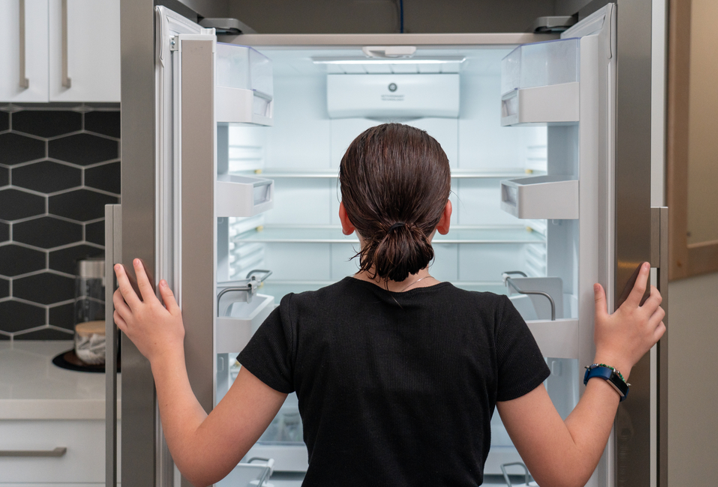In every New Zealand household, the refrigerator plays a vital role in food safety and preservation. This is why understanding the ideal fridge temperature is fundamental to good food hygiene.
The magic numbers for the best fridge temperature range hover between 2°C and 4°C. Keeping your refrigerator set within this range ensures your food stays fresh for a longer period while minimising the risk of bacterial growth. But why is this so important? Let’s delve into the reasons.
Why is Fridge Temperature Important?
In New Zealand homes, regulating fridge temperature isn’t just about keeping your milk fresh or your veggies crisp; it’s a matter of health and wellness. If your fridge’s internal temperature sneaks above 4°C, it creates a playground for bacteria. They multiply at an alarming rate, resulting in spoiled food and an increased potential for nasty foodborne illnesses.
On the flip side, a fridge that’s too chilly comes with its own set of problems. Your food and drinks can unintentionally freeze. This not only spoils the natural texture and flavour of your fresh produce but also poses a risk of glass containers bursting due to the freezing temperature.
How to Monitor Your Fridge Temperature
Regular checks on your fridge and freezer temperatures are advisable to ensure they remain within the ideal range. Consider purchasing an appliance thermometer, which can be placed in the warmest part of your fridge – often the door or the top shelf – to monitor the temperature.
The thermometer can guide you in adjusting the settings until the desired temperature is achieved. Keep in mind, temperature distribution can vary within the fridge due to factors like door opening, storage of hot food, or overstocking, so regular checks are essential.
Understanding Freezer Temperatures
Freezers, much like refrigerators, have a critical role in food preservation. They work best at a steady -18°C. This is the optimal temperature to maintain the nutritional value, texture, and flavour of your food for a prolonged period.
A freezer that is not cold enough can cause your food to partially thaw, changing its texture and possibly its safety. On the other hand, if the freezer is too cold, it can cause freezer burn – conditions where food loses its moisture, leading to a change in taste and texture.
Efficiency and Energy Savings
Appropriate fridge and freezer temperatures aren’t just about food safety; they’re also about efficiency and energy conservation. Refrigerators and freezers consume a significant portion of household energy, and having them run too cold unnecessarily can increase your power bills.
Properly maintained and regulated fridge and freezer temperatures can help these appliances operate more efficiently, saving energy and reducing your power bills.
Longevity of Your Appliance
There’s more to monitoring your freezer and fridge temperatures than just keeping your food in check – it’s about showing a bit of TLC to your appliances, too. Pushing the temperature too high or too low means your fridge or freezer’s compressor (that’s the hard-working little engine that could, powering your appliance) has to work overtime. It’s like making your fridge run a marathon every day, leading to quicker wear and tear and cutting your appliance’s life short.
By taking care to keep your freezer and fridge temperatures just right, you’re not just doing your food a favour, but you’re also giving your appliances a longer life. This means dodging hefty repair costs or having to buy a replacement sooner than you’d like.
The Bottom Line on Freezer and Fridge Temperatures
Understanding and maintaining the correct fridge temperature is a crucial aspect of food safety and can save your family from food-related illnesses. It also prevents unnecessary food wastage and helps your fridge run efficiently, thus reducing your power bills and enhancing the longevity of your appliance.
Remember, a well-regulated fridge doesn’t just keep your food fresh; it’s about safeguarding the health and wellbeing of your family. So, make it a practice to regularly check and adjust your fridge and freezer temperatures. With this guide, you’re now equipped to keep your fridge and freezer working optimally for years to come.
Compare Power Companies with Canstar Blue
Washing machines can burn through power, especially on hot washes. And where electricity use is concerned, it always pays to check whether you’re getting the best deal. If you can switch to using your washing machine at a certain time of the day, why not swap to a provider that offers a free hour of power each day? Your savings could be considerable. To make choosing the best electricity provider easier, Canstar compares them on value and service.
Canstar Blue’s latest review of NZ power companies compares them on customer satisfaction. The table below is an abridged version of our full results, available here.
^ By clicking on a brand or 'details' button, you will leave Canstar Blue and be taken to either a product provider website or a Canstar Blue NZ brand page. You agree that Canstar Blue NZ’s terms and conditions apply (without limitation) to your use of this service,to any referral to a product provider from our website, and any transaction that follows. Canstar Blue may earn a fee for referrals from its website tables, and from sponsorship (advertising) of certain products. Payment of sponsorship fees does not influence the star rating that Canstar Blue awards to a sponsored product. Fees payable by product providers for referrals and sponsorship may vary between providers, website position, and revenue model. Sponsorship fees may be higher than referral fees. Sponsored products are clearly disclosed as such on website pages. They may appear in a number of areas of the website such as in comparison tables, on hub pages and in articles. Sponsored products may be displayed in a fixed position in a table, regardless of the product’s rating, price or other attributes. The table position of a sponsored product does not indicate any ranking, rating or endorsement by Canstar Blue. See How we are funded for further details.
Canstar Blue NZ Research finalised in April 2023, published in June 2023.
See Our Ratings Methodology
About the author of this page
This report was written by Canstar Content Producer, Caitlin Bingham. Caitlin is an experienced writer whose passion for creativity led her to study communication and journalism. She began her career freelancing as a content writer, before joining the Canstar team.
Enjoy reading this article?
You can like us on Facebook and get social, or sign up to receive more news like this straight to your inbox.
By subscribing you agree to the Canstar Privacy Policy



Share this article